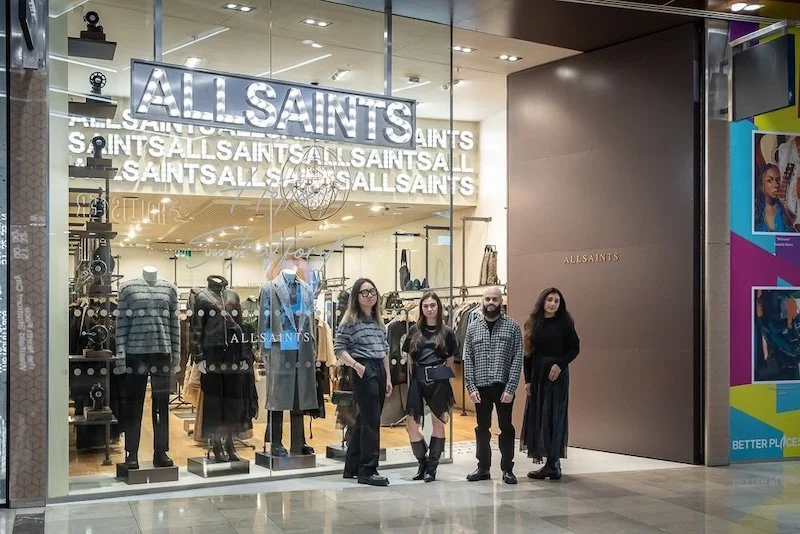Retailer first Selazar rewrites e-commerce fulfilment rulebook
RTIH meets Jack Williams and Gareth Burns, CEO and CTO respectively of Selazar, an e-commerce fulfilment platform which gives SMEs the same power that larger organisations have behind their operations.
UK-based Selazar enables customers to pick, pack, store and ship their products with up to a 40% saving compared to other fulfilment providers.
The venture’s story begins in 2009 when Williams was busy establishing the first of two other e-commerce businesses. These had 100k products and were doing 15-20k orders per month, but only held 8% of said products in stock.
The remaining 92% of stock was held by the manufacturers and suppliers and was drop-shipped. There was a warehouse partner, two different courier partners and seven or eight different manufacturers or suppliers whom the businesss bought products through.
“We then had four or five different software platforms that were, for want of a better phrase, ‘strung together’ to allow the operation to work,” Williams says.
“But because all these software platforms were not built to work with each other, when one went down the whole thing went down. We saw that as the business grew and we got bigger and bigger, it was not feasible to keep this low-cost model as we grew these e-commerce businesses.”
The only option was to build their own SAP ERP system and integrate this with different carriers, set up contracts and invest millions of pounds in sustaining that business model.
After running the first business and selling it, and building the second one, Williams realised that there was a big gap in the market for an innovative piece of software that managed these different areas.
“So, in Selazar’s system, we manage the warehousing, the courier and supply chain as well as the retailer platforms and third-party sales channels all under one roof.”
“That is where the idea stemmed from, and it comes from a ‘retailer first’ point of view to focus on building their growth in the market, especially since e-commerce has become so competitive.”
Selazar, he stresses, is a software company at heart. “We build everything ourselves giving us full control over our network. Having that full control gives us the best quality of service, we have a 100% success rate so far with order accuracy as well as 99.9% order fulfilment rate in line with our SLA.”
Burns adds: “We are leveraging the latest server technology as well as the latest mobile technology and modern code development stacks.”
“We are built to not only have this great foundation but also scale quickly and efficiently based on demand. On top of that, our technology stack means that we can adapt to meet our customers’ needs.”
Users don’t pay for the venture’s platform itself. “Normally, each one of those pieces of software would come at a price. Additionally, you would have rent the building, have staff manning the warehouse, packaging not being used that you have already paid for and numerous other upfront costs,” Williams observes.
“Whereas with us, you only pay for those things after you have already made the sale and that is the only time, we charge you. Our pay-as-you-gomodel makes it really flexible for businesses of all sizes, and that is how we help to fuel our customers’ growth. They don’t need a big upfront startup capital to expand their brand.”
“You can play until you get it right”
From a technical standpoint, Selazar’s USP is the amalgamation of the keydifferent keycomponents needed by e-commerce companies under one roof. It is cloud-first, but doesn’t buy in external software.
“it is all our own bespoke software from what the user sees on the website, what they use when they are managing their orders and stock, right through to what is used in the warehouse to pick and pack orders on the mobile devices,” says Burns.
“Everything is built in-house and designed to scale, and because we listen to our customers directly, we are building features like our product bundles which our competitors don’t have because they don’t have that holistic approach as a foundation. These aspects, tied in with a really nice to use, easily accessible platform that is secure, give us our overall USP.”
Accurate box size selection and smart packagingkeep costs down and help users get their orders to their destination at the desired delivery speed selected by both the client and the customer.
That is Selazar’s first big innovation. The second is that users have full control in their hands. With older style fulfilment operations, in order to make any changes you would have to contact your account manager. Selazar’s system allows dynamic manipulation of “your fulfilment operation on the fly”.
“This is a huge difference from the potential months clients used to have to wait for updates to be made. With us, you can make changes in real-time on the platform, and as soon as you click ‘save’, the changes are in effect from the next order that goes through,” Williams comments.
“In Selazar’s system, we manage the warehousing, the courier and supply chain as well as the retailer platforms and third-party sales channels all under one roof. That is where the idea stemmed from, and it comes from a ‘retailer first’ point of view to focus on building their growth in the market, especially since e-commerce has become so competitive”
“You have full control to try new carriers or new packaging requirements to see what works for your business without having to worry about the lead time it takes to make those changes. With Selazar you can play until you get it right.”
Coronavirus challenges and opportunities
Many high street retailers are struggling right now as the coronavirus continues to loom large. During the first two months of UK lockdown, online sales spiked, and as the majority of physical retailers closed down, most carriers were struggling.
“The first challenge we saw was from retailers having to make a move online without adequate warehousing resources or contracts with carriers, and they needed the ability to scale their e-commerce operation really quickly,” Williams says.
“Unfortunately, viewing new warehouses, sourcing staff and setting the whole thing up is a very face to face, hands on job which is not possible in the current climate.”
Turning to pre-built networks like Selazar has, therefore, become increasingly popular. “We can get you up and running in as quickly as three working days, but more standardly within one to two weeks which is considerably quicker and cheaper than doing it yourself.”
Secondly, with many people staying home and shopping online, there’s a need for parcels to be delivered at set times, intact, without damage. Also, some customers may not have the option or feel safe to leave the house to make returns.
In the run up to Christmas, there will be a significant increase in online orders and returns so it’s especially important to have a robust returns solution in place that can give consumers confidence when shopping.
With Selazar’s returns system, customers can complete returns from the comfort of their own homes or use local drop off points if that is more convenient. “We are always developing and improving our methods of supporting our customers and their consumers.”
“We move forward, build and optimise”
Selazar recently completed a website overhaul and brand update. “We found that our site wasn’t enabling the dynamic interaction we needed to be an innovative tech-first company, so we fixed it. It’s simple, really, a tech-first ideology means we don’t sit back and accept inferior solutions,” Williams observes.
“We move forward, build and optimise. We’ve always given great service, but our brand image didn’t match our service level. We’ve big plans for the future, the website overhaul and brand update are just some of the steps we’re taking.”
Elsewhere, Selazar has a new returns product going live in October. It built this product with Christmas in mind, to try and minimise any risk given a potential second coronavirus spike.
At the moment, there is Selazar Returns which allows users to return items by dropping them off at their local Collect+ point and another system for home collections. The plan is to merge these two products to create a full and robust suite called Return Robin.
And there is also, of course, the Selazar platform, which will get more integrations, more features, more functionality as the company starts to broaden the number of couriers on it.
With supply chain integrations, Selazar can work with suppliers and manufacturers to bring more stock into its network and fulfilment centres without them needing to repeat orders as it starts to pick up the full operation.
“We will move away from being solely 3PL and returns, and into the full operational supply chain element of our retailers’ businesses, allowing them to engage with their partners and manufacturers, ensuring they have a fully automated end-to-end operation over the next 12 months,” Williams adds.
The company is also looking at new regions and territories, allowing customers to distribute their stock between different warehouses so that they can start exploring different markets. “This is something that we are looking at over the next 12-18 months as we expand out of the UK.”
Ultimately, it’s all about ensuring customers are confident Selazar’s offering is robust and is growing with them and the industry.
“We will continue to listen to our customers who provide us with the best direction to go for them, telling us what they need and how we can make their lives easier,” Burns concludes.










Continue reading…